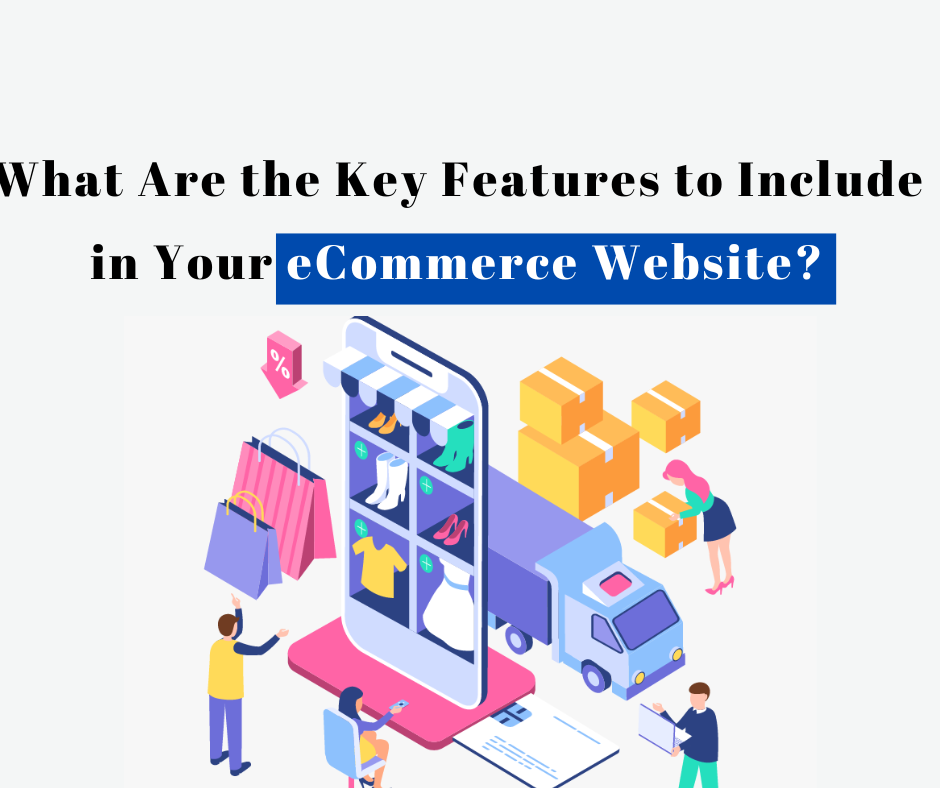
Success in the cutthroat realm of online retail depends on having a functionally good eCommerce website. Good eCommerce sites guarantee a flawless shopping experience in addition to drawing consumers. Knowing the main elements to incorporate in your eCommerce website is crucial as companies try to improve their online presence. This book delves deeply into these elements to provide understanding of what distinguishes an eCommerce site.
Essential Features for a Successful eCommerce Website
Features of an e-commerce website should improve user experience, simplify processes, and increase sales-driving capability. These are some of the most crucial aspects you should give thought:
1. User-Friendly Navigation
Navigation is a fundamental feature of any online store. Easy finding of what one is seeking for is guaranteed by a well-ordered menu and simple navigation. Important components consist in:
- Clear Categories: Sort products into clearly defined categories and subcategories.
- Search Functionality: Put in place a strong search with sorting choices and filters.
- Breadcrumbs: Give users breadcrumb navigation to clarify their site location.
2. Responsive Design
Adaptable design is absolutely vital given the growing use of mobile devices for online buying. Your e-commerce site should be best for tablets and cellphones among other screen sizes. Reducing bounce rates and improving user experience, a responsive design guarantees that your site appears and operates properly on any device.
3. High-Quality Product Images
Online purchasing depends much on product visuals. Excellent, finely defined visuals might affect decisions to buy. Important factors include:
- Multiple Views: Show pictures taken close-up and from several angles.
- Zoom Feature: Let people enlarge photographs to have a closer look.
- Video Demonstrations: Add movies to highlight the product in use.
4. Detailed Product Descriptions
Well written, thorough product descriptions enable consumers to make wise choices. Add the following information:
- Specifications: Specify technical details and dimensions.
- Benefits: Emphasize the good qualities and benefits of the product.
- Usage Instructions: Provide direction on product use that makes sense.
5. Secure Payment Gateway
Protection of consumer data and development of trust depend on a safe payment gateway. Make sure your e-commerce site lets you handle several payment options, including:
- Credit/Debit Cards: Provide several cards to choose from.
- Digital Wallets: Add alternatives such Google Pay, Apple Pay, and PayPal.
- Bank Transfers: Offer a safe approach for direct bank transfers.
6. Shopping Cart and Checkout Process
The checkout system and shopping cart ought to be simple and easy for use. Important elements include:
- Cart Management: Let consumers quickly add, delete, or change objects in their cart.
- Guest Checkout: Give consumers a choice to check out without registering an account.
- Order Summary: Provide a clear summary of the order before finalizing the purchase.
- Shipping Options: Give several shipping options and projected arrival times.
7. Customer Reviews and Ratings
Customer reviews and ratings can influence purchasing decisions and build trust. Include features such as:
- Review Submission: Allow customers to leave reviews and rate products.
- Moderation: Implement a system to moderate and manage reviews.
- Ratings Display: Show average ratings and customer feedback on product pages.
8. Search Engine Optimization (SEO)
Effective SEO practices ensure that your eCommerce website ranks well in search engine results. Key SEO features include:
- Meta Tags: Optimize meta titles and descriptions for search engines.
- Alt Text for Images: Use descriptive alt text for product images.
- SEO-Friendly URLs: Create clean and descriptive URLs for product pages.
9. Customer Support Integration
Providing excellent customer support is essential for a positive shopping experience. Consider integrating the following features:
- Live Chat: Offer real-time assistance through a live chat feature.
- Help Center: Provide a comprehensive FAQ section and support resources.
- Contact Forms: Include forms for customers to submit inquiries or complaints.
10. Analytics and Reporting
Analytics and reporting tools are crucial for understanding customer behavior and making data-driven decisions. Key features include:
- Traffic Analysis: Monitor website traffic and user behavior.
- Sales Reports: Track sales performance and revenue.
- Conversion Tracking: Measure the effectiveness of marketing campaigns and conversion rates.
Choosing the Right eCommerce Website Development Company in Dubai
Working with a seasoned eCommerce Website Development Company in Dubai would help much when you are designing an eCommerce website. These organizations provide specific knowledge in developing eCommerce solutions fit for your company requirements. They help with:
- Custom Design: Creating an original and appealing website design fit for your brand.
- Functionality: Applying necessary tools and features to improve user interface.
- Optimization: Making sure your website is search engine optimized, security, and performance friendly.
Implementing Advanced Features
Apart from the fundamental elements, think about adding sophisticated tools to improve your eCommerce page even more:
1. Personalization
Personalization can significantly improve user experience and increase sales. Use data to offer personalized recommendations, promotions, and content based on user behavior and preferences.
2. Subscription Services
Subscription services allow customers to sign up for recurring deliveries or services. Implement features for managing subscriptions, including payment options and renewal reminders.
3. Loyalty Programs
Loyalty programs reward repeat customers and encourage customer retention. Include features for tracking points, rewards, and membership tiers.
4. Multi-Language and Multi-Currency Support
Multi-language and multi-currency support are essential for businesses operating in global markets. Implement features that allow users to choose their preferred language and currency.
Conclusion
Creating a good eCommerce website calls for including a variety of elements that improve user experience, simplify processes, and increase sales drive. You may build a convincing online shopping experience by concentrating on important aspects including user-friendly navigation, responsive design, high-quality product photos, safe payment choices, and good customer service. Working with a seasoned eCommerce Website Development Company in Dubai will help you to guarantee that your site satisfies industry requirements and distinguishes yourself in the cutthroat internet market. Remember these elements as you create your eCommerce site to create a platform that not only draws clients but also supports long-term success.